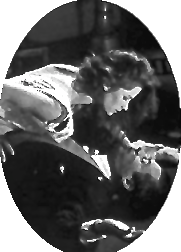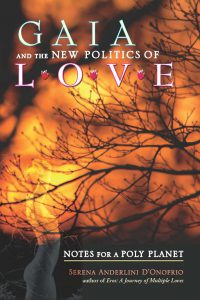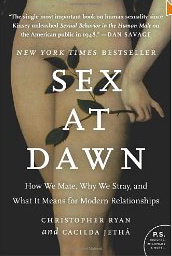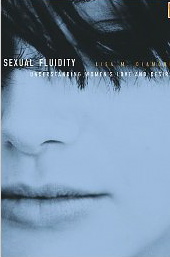Dear Earthlings,
I have been out of touch for a while. You may have missed me. Please forgive. The move to U Conn, Storrs, was no joke and took most of my focus. Now, Sandy has passed too, and if that does not help generate awareness of Gaia Theory I don’t know what will!
U Coon Storrs is very congenial. A university expanding in multiple directions across disciplines: environment, sustainability, the digital sphere, education, health, language an culture. Woooow! How inspiring. I feel very happy to be in the midst of this. The Fellowship group is also beautiful. I love the communion of the minds in our discussions. Namaste!
So, I’m back with a desire to share what I’ve been doing. Here’s my latest to the Fellows group. It’s about the ur-director of Italian cinema, Fellini. These are just in-progress notes. Don’t take them too seriously. Also, watch the two beautiful clips. Let me know what you think.
Fellini’s Orgiastic Imagination: A Dream of Return to Mother, Hostess, Lover, Liquid Matrix of Life
Serena Anderlini-D’Onofrio, PhD
UCHI Presentation, October 24, 2012
Context of Book Project Amorous Visions: Fluid Sexual Moments in Italian Cinema
Chapter on Assunta Spina, silent, 1914.
Diva, a chthonic force, a manifestation of the divine feminine, more than a French or British femme fatale or an American flapper. Diva: means “goddess,” integrates pagan and Christian aspects of divine feminine: pagan goddess and mater dolorosa. The film is in the hands of the Diva, she calls the shots (Dalle Vacche, passim). Film Assunta Spinais all about amorous inclusiveness and sexual fluidity: Assunta loves unconditionally all three men in her life. But they don’t understand this, each wants her exclusively, one disappears, and one ends up killing the other. Assunta accuses herself of murder when the police arrive.
Chapter on White Telephones genre, as in What Rascals Men Are, 1932. It’s black and white sound cinema. Genre: romantic comedy, comedy of manners: carefully avoids social and political issues, is designed to keep people entertained and oblivious to what’s around them. Idealized world: telephones are white. Also, corresponds to 1930s, a period of crisis in Italian based film production, because the “talkies’ come from America and people what to see that.
Chapter on Bitter Rice, 1948. Neorealismo: new national identity post Fascism. Film as epistemology rather than art, a way to “know” the Italy kept under wraps by Fascism. Film is shot on location, non-professional actors, script often improvised, long panning shots, lots of context, local character, group protagonist, “macchiettismo,” humor mixed with drama (Marcus, passim). Construction of a national identity involves a way to justify ownership of a territory, which becomes un-sovereign, feminized. So this identity, this “ownership” has a masculine character, and is predicated on styles of love that are functional to reproduction, including of course, heterosexuality. This is when what Eve Kosofsky-Sedgwick would call “writing of homosexual panic” begins. “Sexual fluidity” and “amorous inclusiveness” are only visible in spurts, scenes that are pivotal to the plot but whose “love for love” energy gets quickly reined in and redirected toward love that’s functional of human reproduction. Bitter Rice has focus on women’s lives in the rice harvest fields. If you view the movie w/ “queer” binoculars, from the POV of an age when women can marry each other, you can see that Silvana and Francesca could have become lovers. They attract and are attracted to the same guys. They are coopted in a regime of sexual functionalism, Silvana becomes enraptured by Francesca’s prior life of robbery and glamour, and the only time their reciprocal love becomes expressed is when Francesca unsuccessfully tries to save Silvana from committing suicide.
Chapter on Fellini’s I Vitelloni, 1953. Film is part of Neorealismo in technique, style, structure, and also consolidates the practice of “cinema d’autore,” Italian version of auteur film.
Meanings of title: the overgrown milk-fed calves, the big bowel or gut, lazy good-for-nothings (Stubbs, 95). I Vitelloni brought success of public and criticism to Fellini, thus enabling funding of subsequent films (Baxter, 100-1).
Cinema d’autore, or auteur film
Context: effort to establish film as an art form w/ its own specificity, aesthetics, epistemological function.
Film as Art: stills movement image across time. As in “movement-image,” “time-image,” Deleuze. Many inspired artists are attracted to it.
Truffaut, French director who theorized auteur in Cahiers du Cinema, Jan 1959, p. 221: “Cinema cannot be an art as long as it is the result of the work of a group” (Wall, 23).
About Fellini: “On the filmmaker playing God” (Wall, 97).
Fellini makes fun of scriptwriter in 8 ½, of playwright in I Vitelloni, his casting is based on him seeing an actors’ face as a “sculpture” her can use to do what he likes (Baxter, 98-99). He infuriates producers, goes over budget and ignores shooting timeline.
But what is the “content” of this sovereign vision?
What is the desire that animates the artist?
I guess most would agree that it is a desire for inclusive beingness, not action. “Advanced” Fellini ever more eliminates plot, narrative. He dwells in being-in-the-moment, the imaginary, dream, inclusive festive moments of idleness embraced by an ironic gaze that is benevolent and cherishing at the same time.
Clip from I Vitelloni’s Carnival scene, Bakhtin, Carnival as reversal, polyphony, carnival, the grotesque, heteroglossia.
Clip from I Vitelloni’s scene of “homosexual panic,” as per a Sedgwick manual. But what is this panic? A fear of the wild side, of what it would take to turn “real” life into a circus, a carnival, an orgiastic space of orgasmic immersion into the pleasure of the other?
My contribution to the debate:
Fellini’s avowed “dreams” about water, seas, mothers. Remember, in Romance languages these are acronyms: mer, mere; mare, madre; mar, madre. No coincidence! The mother is a liquid body to the child, first amniotic, then milk. Water is the matrix of life. Fellini avows that he loves to dream, that he makes films so people can watch his dreams, a version of them (Chandler, 209).
Who are the five vitelloni?
Three of the five represent aspects of his personality – womaniser, homophile, intellectual – with Riccardo supplying the physical resemblance and Moraldo the professional” (Baxter, 98)
My point: I like this idea that eachvitellone is an aspect of Fellini’s personality, the all-encompassing visionary of the all inclusive orgy of life. In this context, Leopoldo, the deluded playwright, is a put down of theater, the traditional art of representation, in relation to the new one, cinema, that Moraldo, the observer Fellini, will supposedly embrace when he gets to Rome.
“The all-encompassing visionary of the all inclusive orgy of life.” As within, dream, so without, film. Key is irony, Fellini, like Moraldo, observes the “orgy of life,” w/ distance both ironic and passionate. And this vision, is nothing but a dream to return to the undifferentiated, the divine feminine mother, hostess, lover, liquid matrix of life.
Reported recurring dream of Fellini’s:
“As a giant sea monster was lifted out of the water, I saw that it was actually a huge woman. She was beautiful and ugly, at the same time. Which did not seem at all a contradiction to me. Then, as now, I could not help but notice that she had huge thighs. Even in relation to her gangantuan proportions, her thighs wee abnormally large” (Chandler, 206).
“I’m a child in a tube being bathed by women. It’s an old-fashioned wooden tub, like the one that was outdoors at my grandmother’s farm, the kind we children used to mash the grapes for wine with our bare feet. Before mashing the grapes, we had to wash our feet. Afterwards you could still smell the residue of fermenting grapes when you took a bath in the tub. It could almost make you feel drunk.
Sometimes I bathed with several children, little boys and girls, all of us naked. The waster was deep, over my head, which was my definition of deep. All of the other children could swim. I was the one who couldn’t. Once I nearly drowned. I had to be pulled out by my hair. Fortunately I had more then than I do now, or I would have drowned.
In my dream, as I get out of the tub, my naked, wet little body is wrapped in big towels by several women with huge breasts. Women in my dreams never wear brassieres, nor do I think brassieres that large ever existed. They wrap me in their towels. They hold me against their breasts, rolling me back and forth to dry me. The towel brushes against my little thing, which flips merrily from side to side. It’s such a lovely feeling, I hope it never stops. Sometimes the women fight over me, which I enjoy too.
I’ve spent my life looking for the women of childhood who wrap you in towels” (Chandler, 208).
Works Cited
Bertini, Francesca and Gustavo Serena. Assunta Spina. Rome: Caesar Film, 1915.
De Santis, Giuseppe. Riso amaro/Bitter Rice. Rome: Lux, 1948.
Fellini, Federico. I Vitelloni/The Young and the Passionate. Rome: Peg-Film, 1953.
Baxter, John. Fellini. New York: St. Martin’s Press, 1993.
Chandler, Charlotte. I, Fellini. New York: Random House, 1995.
Dalle Vacche, Angela. Diva: Defiance and Passion in Early Italian Cinema. Austin: Texas University Press, 2008.
Kosofsky-Sedgwick, Eve. “The Beast in the Closet: James and the Writing of Homosexual Panic.” In Sex, Politics, and Science in the Nineteenth Century Novel (148-186). Beinard Yeazell, Ruth ed. Baltimore: Johns Hopkins University Press, 1986.
Marcus, Millicent. “Introduction.” Italian Film in the Light of Neorealism (1-29). Princeton University Press, 1986.
Stubbs, John C. Federico Fellini as Auteur. Carbondale. IL: Southern Illinois Press, 2006.
Wall, James McKendree. The European Directors. Grand Rapids, Michigan: William Eerdmans Publishing, 1973.
Dear Earthlings,
 |
| Courtesy of Poliamore Italia |
Remember to come back on Mondays for more snippets of what yours truly is up to.
Want to know more about yours truly’s new book? What Is Love dares to engage the million dollar question! Would like to pre-read? Find out how to endorse the book here.
Education is the heart of democracy, education to love. Come back for more wonders.
Namaste,
Serena Anderlini-D’Onofrio, PhD
Author of Gaia, Eros, and many other books about love
Fellow at UCHI
 Professor of Humanities
Professor of Humanities University of Puerto Rico, Mayaguez

Follow us in the social media
Author’s Page/Lists all books:





http://polyplanet.blogspot.com


















